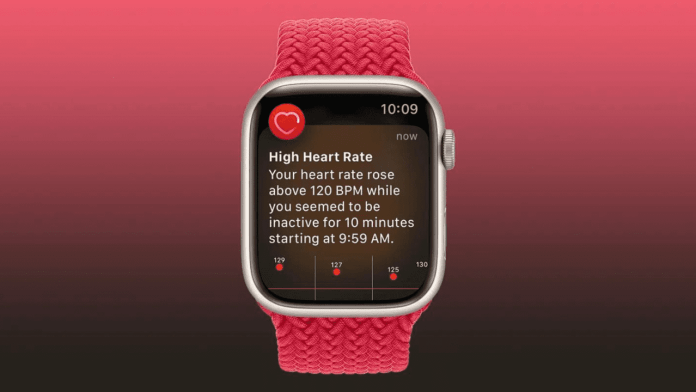In a remarkable incident, a 29-year-old woman from California credited her Apple Watch for alerting her to a potentially life-threatening situation during her sleep. The smart wearable device detected a blood clot in her lungs, allowing her to seek immediate medical attention and potentially preventing a dire outcome.
The woman, whose name is being withheld for privacy reasons, had recently purchased an Apple Watch Series 7 with advanced health monitoring features. These features include blood oxygen level monitoring and heart rate tracking, which can provide users with valuable health insights.
During the night, the woman’s Apple Watch alerted her to an unusually high heart rate and a significant decrease in blood oxygen levels while she was asleep. Concerned by these readings, she immediately contacted emergency services and described her symptoms. The emergency responders advised her to seek medical attention promptly.
Upon arriving at the hospital, medical professionals conducted a series of tests and discovered a blood clot in her lungs, also known as a pulmonary embolism. This condition can be life-threatening if left untreated, as it can restrict blood flow to the lungs and lead to severe complications.
The timely detection of the blood clot by the woman’s Apple Watch allowed doctors to intervene promptly, initiating appropriate treatment to dissolve the clot and prevent further complications. The woman is now recovering well and expressed her gratitude for the life-saving technology that alerted her to the potential danger.
This incident highlights the growing role of wearable devices equipped with health monitoring features, such as the Apple Watch, in detecting and preventing serious health conditions. As these devices continue to evolve, they provide individuals with valuable health insights and the ability to proactively address potential risks.
While the Apple Watch is not intended to replace professional medical advice or diagnosis, it serves as an additional tool for users to monitor their well-being and seek appropriate medical attention when necessary. The incident involving the 29-year-old woman underscores the potential of such devices to detect abnormalities and potentially save lives.
As the field of wearable technology advances, it is expected that more innovations in health monitoring will emerge. With the ability to track various health metrics and detect anomalies, these devices have the potential to play a significant role in early detection and prevention of health issues.
The story of the 29-year-old woman serves as a powerful reminder of the importance of paying attention to our health and utilizing available technologies to monitor our well-being. As wearable devices continue to evolve, they have the potential to empower individuals in taking control of their health and well-being like never before.

